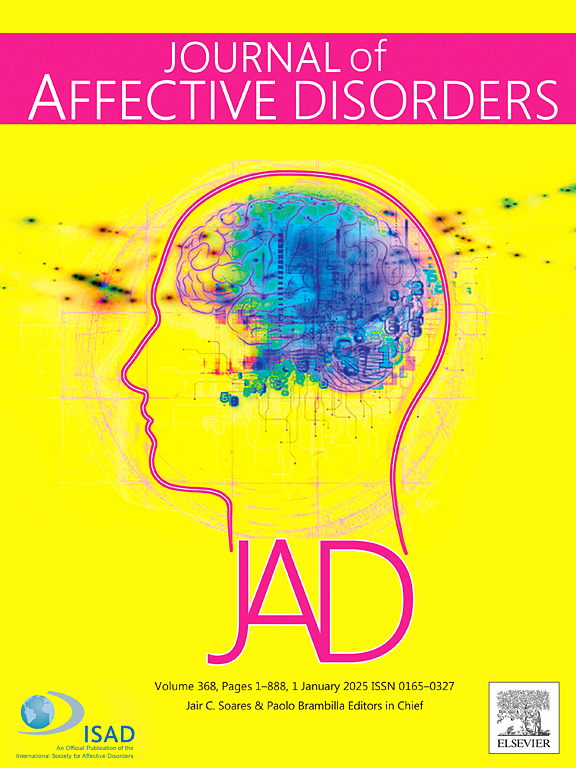Association between cardiometabolic index (CMI) and suicidal ideation: The mediating role of depression and cardiovascular disease
IF 4.9
2区 医学
Q1 CLINICAL NEUROLOGY
引用次数: 0
Abstract
Background
Although existing evidence has shown a significant relationship between lipids and suicidal ideation, the relationship between Cardiometabolic index (CMI) and suicidal ideation remains unclear. This study aimed to explore the association between CMI and suicidal ideation. Furthermore, we explored whether several common CMI-related diseases mediate this association.
Methods
This cross-sectional study analyzed data from 13,549 adults in the National Health and Nutrition Examination Survey (NHANES) from 2005 to 2018. Weighted multivariate regression models and restricted cubic spline (RCS) were used to examine the association between CMI and suicidal ideation. Subgroup and interaction analyses were conducted to assess the robustness of findings across different populations. Mediation analysis was performed to evaluate the potential mediating roles of depression, coronary artery disease (CVD), hypertension, and diabetes in this relationship.
Results
In the fully adjusted model, each unit increase in CMI was associated with a 17 % increase in the risk of suicidal ideation. Compared to the lowest tertile, participants in the highest tertile had a 41 % increased likelihood of suicidal ideation (95 % CI: 1.05–1.91). The association between CMI and suicidal ideation was consistent across different populations (all P for interaction >0.05). Depression and CVD partially mediated this relationship, accounting for 20.4 % and 4.5 % of the total effect, respectively.
Conclusions
CMI is associated with an increased risk of suicidal ideation, with depression and CVD acting as partial mediators in this relationship. Reducing CMI with the goal of improving obesity and glucose and lipid disorders may be a key strategy to reduce suicidal ideation.
求助全文
约1分钟内获得全文
求助全文
来源期刊

Journal of affective disorders
医学-精神病学
CiteScore
10.90
自引率
6.10%
发文量
1319
审稿时长
9.3 weeks
期刊介绍:
The Journal of Affective Disorders publishes papers concerned with affective disorders in the widest sense: depression, mania, mood spectrum, emotions and personality, anxiety and stress. It is interdisciplinary and aims to bring together different approaches for a diverse readership. Top quality papers will be accepted dealing with any aspect of affective disorders, including neuroimaging, cognitive neurosciences, genetics, molecular biology, experimental and clinical neurosciences, pharmacology, neuroimmunoendocrinology, intervention and treatment trials.
 求助内容:
求助内容: 应助结果提醒方式:
应助结果提醒方式:


